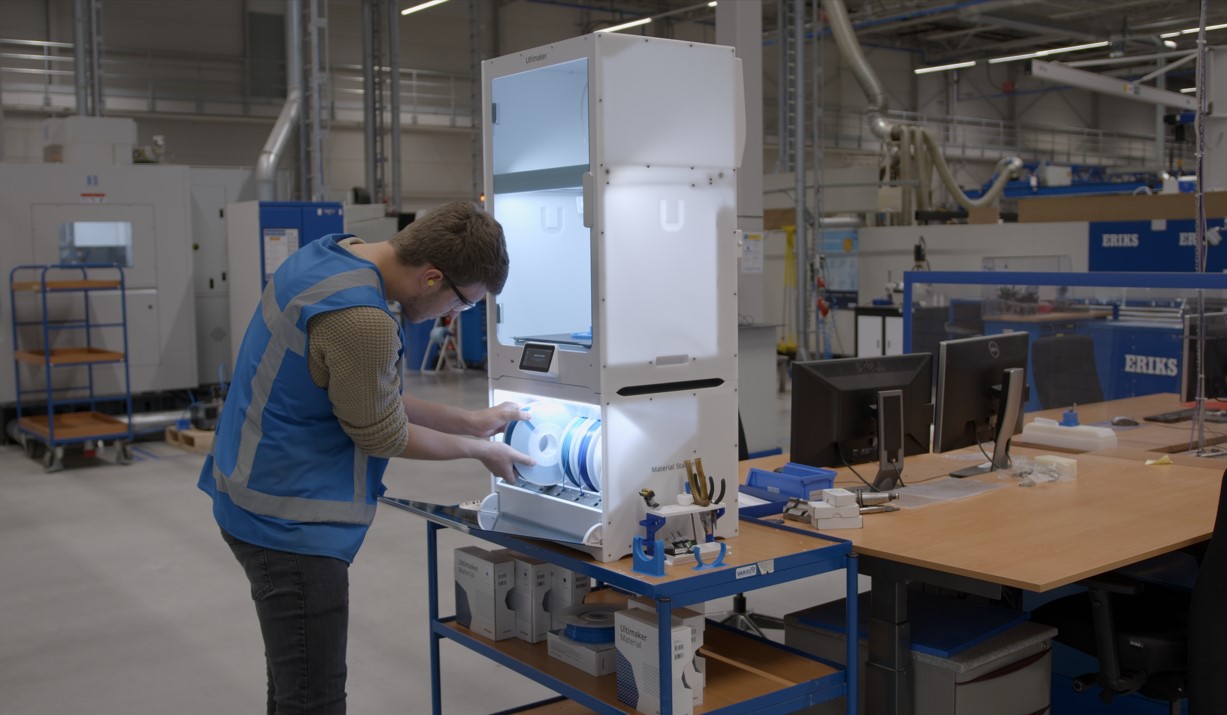ERIKS, a Dutch company providing mechanical engineering components and services, is one of those adopters of 3D printing we rarely hear about. The company has been using 3D printing for various operations, from jigs and fixtures to production parts. Today, it focuses on lean manufacturing practices to create more value for customers. As such, it recently certified its workflow to create food-safe 3D-printed parts.
The majority of ERIKS 3D printers are dedicated to prototyping, customized jigs, fixtures, and tooling for production or maintenance purposes. Over time, the company has embraced the use of 3D printing for end-use parts, leveraging a variety of materials to meet specific requirements such as heat resistance, food safety, or EMD safety.
For Job van de Sande, Head of Engineering at ERIKS, the versatility of 3D printing and the constant updates have led the team to utilize the UltiMaker 3D printing ecosystem as the main choice for FDM.
With a fleet of about 25 3D printers across 10 different teams in six different countries, ERIKS uses FDM 3D printing for rapid prototyping and small series production, where cost-effectiveness and speed play crucial roles.
“During the development process, we can produce a part to make it easier to show to our production team or customers,” Jan Brabander, Product Manager at ERIKS Industrial Plastics in Ede, the Netherlands, notes. “We also use 3D printing throughout our processes internally, like production or quality control. For example, tools to assemble products, or to check measurements, or to make our process faster, smoother, and of better quality. We use 3D printing more and more for making end-use parts that are industrial grade and can be used in the machines or in the factories of our customers.“
ERIKS Industrial Plastics specializes in CNC machining and injection molding, but also incorporates 3D printing as a viable option for producing parts tailored to customer needs.
Van de Sande explains, “Whether they search for an application that needs to be heat resistant or food safe or EMD safe, 3D printing will work. But, also, when they look at more dynamic properties like having flexible or very stiff parts, they can really utilize the 3D printers for that.” The Engineering Plastics production facility in Ede is designed to produce food-safe parts according to EC1935 and in compliance with GMP standards.
 At the software level, the company does not fail to mention the importance of Trinckle for their operations. This software offers parametric design and automation solutions and has enabled a broader group of individuals, who do not necessarily have engineering backgrounds, to create applications and utilize 3D printing. The software also offers a range of industry-standard preset fixtures, allowing ERIKS to streamline and accelerate the creation of 3D-printed applications.
At the software level, the company does not fail to mention the importance of Trinckle for their operations. This software offers parametric design and automation solutions and has enabled a broader group of individuals, who do not necessarily have engineering backgrounds, to create applications and utilize 3D printing. The software also offers a range of industry-standard preset fixtures, allowing ERIKS to streamline and accelerate the creation of 3D-printed applications.
Van de Sande outlines a bottom-up approach for 3D printing adoption. Teams throughout ERIKS are encouraged to explore the potential of 3D printing within their production environments, gradually becoming part of the 3D Printing Expert Group. ERIKS has fostered a community where experts from different business units and locations converge to exchange ideas and knowledge, ensuring a holistic approach to 3D printing implementation.
Remember, you can post job opportunities in the AM Industry on 3D ADEPT Media for free or look for a job via our job board. Make sure to follow us on our social networks and subscribe to our weekly newsletter: Facebook, Twitter, LinkedIn & Instagram ! If you want to be featured in the next issue of our digital magazine or if you hear a story that needs to be heard, make sure you send it to contact@3dadept.com






